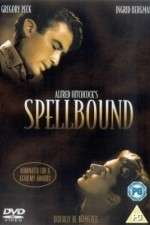Spellbound

"The Fault... is Not in Our Stars,
But in Ourselves..."—William Shakespeare, quoted at the beginning of the movie
Spellbound (1945) is a psychological thriller directed by Alfred Hitchcock, with a score composed by Miklos Rozsa. Dr. Constance Peterson (Ingrid Bergman) is a psychoanalyst at a mental institution which is about to receive a new director, Dr. Anthony Edwardes (Gregory Peck). However, Dr. Peterson soon notices that there is something strange about Edwardes, and discovers that the new director is not what he claims to be.
The story was adapted from the novel The House of Dr. Edwards (1927), by Hilary Saint George Saunders. The movie is notable for its use of Freudian psychology and dream sequences designed by Salvador Dali.
(Side note: This is the film that inspired Jerry Goldsmith to become a film composer after he heard this score. Years later he became the student of Miklós Rózsa who wrote the score of this film.
- All Psychology Is Freudian
- Amnesiac Dissonance: Edwardes, after he regains some of his memories, believes that he is a murderer.
- Clear Their Name: Dr. Peterson and Edwardes must attempt to prove that Edwardes is innocent of murder, even when he thinks he did it.
- Dead Person Impersonation: The person who we are introduced to as Dr. Edwardes is actually John Ballantyne, who believed he was Edwardes after losing his memories, and we come to find out Edwardes has been murdered.
- Dream Sequence: Designed by Salvador Dali, no less.
- Flashback Nightmare: The dream sequences in the movie are a mind-screwy, symbolic version of this.
- Have You Told Anyone Else?: A unique example of a person knowingly placing themselves in this position, and successfully talking their way out of it.
- Mind Screw: The dreams.
- Single-Issue Psychology: Averted to an extent, as Edwardes develops amnesia caused by witnessing a murder, coupled with his repressed guilt from a childhood accident in which his brother was killed.
- Splash of Color: The movie is filmed in black and white except for a few frames at the end that are filmed in red when the villain commits suicide.
- Trauma-Induced Amnesia: Edwardes develops amnesia after witnessing a murder, which he associates with the death of his brother when he was a child.
- The Walls Have Eyes: One of the dreams features a wall covered in eyes.